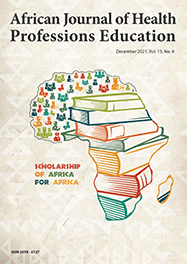Research

Comparison between MMed Anaesthesia Programmes in SADC
Abstract
Design. Course programme directors were contacted for information, other information was sought from the Internet and following up literature references. Follow-up telephone and email conversations were used to fill in gaps where possible. Document analysis and tabulation of results were done.
Results. Of the 19 programmes there was little or no information on 6 (2 in the Democratic Republic of the Congo (DRC) and 4 in Madagascar). Of the remaining 13 programmes, 8 are in South Africa. The South African and Botswana programmes use competency-based training (CBT) and use both the college Fellowship and the MMed simultaneously. The remaining programmes in Zimbabwe, Malawi and Tanzania use a traditional curriculum and are entirely MMed programmes. In general the faculties are small, resulting in small trainee intakes. Programme duration is generally 3 years in East Africa (including Tanzania – a SADC member) and 4 years in Southern Africa. Entry requirements are generally similar but internal organisation of the courses differs. This is important for meeting regional harmonisation policies.
Conclusions. This paper adds to the literature and discusses some of the key issues facing training programmes in the region. A mixture of College Fellowship- and university-based MMed programmes with new thinking on curriculum will be required to grow the specialty’s role in service delivery.
Author's affiliations
Farai Daniel Madzimbamuto, University of Botswana School of Medicine
Keywords
Cite this article
Article History
Date published: 2012-07-11
Article Views
Full text views: 16429




.jpg)
Comments on this article
*Read our policy for posting comments here